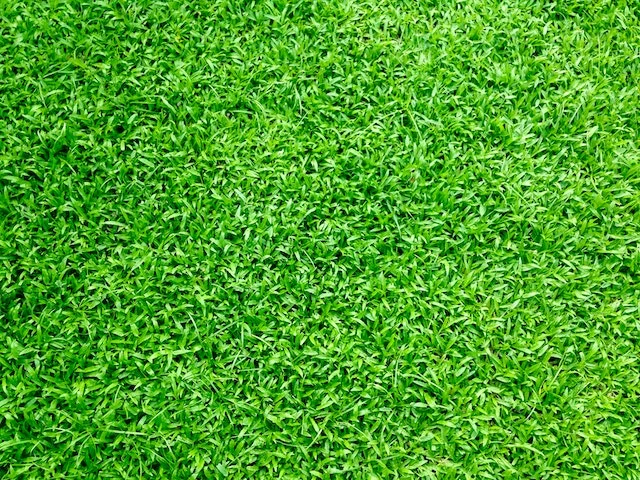Information
The History Of Artificial Grass

Artificial grass, referred to as synthetic turf or faux grass, has seamlessly integrated itself within contemporary landscapes, sports arenas, and recreational enclaves. Serving as a meticulously engineered substitute for authentic grass, its purpose is to emulate the tactile and visual essence of genuine grass, all the while providing discernible benefits in maintenance efficiency and longevity.
Table of Contents
Early Beginnings of Synthetic Turf
Before the advent of contemporary artificial grass, initial endeavors to craft synthetic playing surfaces played a seminal role in its subsequent evolution. A notable precursor in this sphere was the introduction of Astroturf during the 1960s, which, despite its imperfect nature, established a bedrock for subsequent advancements in synthetic turf technology.
Concurrently, exploratory initiatives encompassed the experimentation with artificial playing surfaces, notably within sports such as hockey. These endeavors were driven by the objective of delivering unwavering playing conditions irrespective of meteorological factors. These early forays laid the groundwork for the eventual development of more sophisticated and authentic artificial grass solutions.
Emergence and Evolution
The decades spanning the 1960s and 1970s represent a momentous juncture in the evolutionary trajectory of artificial grass. At this pivotal juncture, the contributions of researcher David Chaney emerged as a cornerstone in the refinement of synthetic grass tailored specifically for sports utilization. Chaney’s pioneering endeavors paved the path for the integration of synthetic turf within sporting domains such as football, affording a reliable playing surface irrespective of inclement weather conditions.
Subsequently, the progression of technological innovation during the ensuing decades, notably the 1980s and 1990s, catalyzed substantial enhancements in the composition of artificial grass materials, amplifying both its robustness and adaptability. Consequently, the applications of artificial grass transcended conventional sports fields, permeating diverse realms encompassing landscaping as well as recreational facilities.
Impact on Sports
Artificial turf brought about a revolution within the sports sector by providing the advantage of year-round usability and diminished maintenance expenditures. Among the initial disciplines to extensively embrace synthetic turf were football (soccer) and American football. The incorporation of artificial grass into these athletic domains yielded consistently reliable surfaces for athletes, irrespective of diverse weather circumstances.
Nonetheless, the assimilation of synthetic turf into sports has engendered deliberations. Discussions have arisen concerning athlete injuries and the conceivable influence on the nature of gameplay, underscoring the intricate array of merits and demerits associated with its application in sports.
Technological Innovations
The evolution of artificial grass has been characterized by a consistent progression of technological breakthroughs. In its initial stages, nylon served as the predominant material; however, a transition to polyethylene occurred gradually, facilitating a heightened level of authenticity in appearance and enhanced durability. Furthermore, the introduction of infill materials, including rubber and sand, aimed to replicate the tactile sensation and cushioning effect of natural grass.
Notably, technological innovations extended to practical considerations, exemplified by the implementation of perforated backings to optimize drainage efficiency and the formulation of maintenance protocols to sustain the enduring performance of synthetic turf.
Environmental and Economic Considerations
In addition to its influence on sports and aesthetic considerations, artificial grass carries noteworthy environmental and economic ramifications. A standout advantage lies in its contribution to water conservation. Unlike natural grass, which mandates substantial water usage for upkeep, synthetic turf obviates such requirements. Moreover, the curtailed utilization of chemicals like fertilizers and pesticides fosters a more ecologically conscious approach.
From an economic perspective, the adoption of artificial grass has given rise to a robust industry, notably within the landscaping and sports sectors. The diminished necessity for ongoing maintenance and irrigation translates into enduring cost efficiencies over time. Notably, advancements in materials and technology, such as those seen with artificial grass from NexGen Lawns, have played a role in enhancing both the environmental and economic aspects of this landscape innovation.
Contemporary Applications
In the present era, artificial grass has expanded its influence beyond the confines of sports fields. Presently, it has gained widespread usage in residential landscaping, appealing to homeowners in search of low-maintenance alternatives that preserve the visual allure of genuine grass. Furthermore, synthetic turf’s resilience and uniform appearance have proven advantageous for endeavors encompassing commercial and municipal landscaping. Moreover, artificial grass has seamlessly integrated into recreational locales and playgrounds, serving as a secure and delightful environment for children and families alike.
Challenges and Future Prospects
Although artificial grass presents a plethora of benefits, it also presents certain challenges. Notably, sustainability apprehensions have emerged due to complications associated with the disposal and recycling of synthetic turf components.
Initiatives are actively underway to formulate greener substitutes and innovative recycling approaches to alleviate the ecological repercussions. Moreover, prospects for artificial grass are shaped by progressive technological breakthroughs. The integration of intelligent technologies to enhance performance monitoring and the persistent drive to achieve heightened realism in aesthetics stand as promising trajectories for future advancements.
Conclusion
The history of artificial grass signifies a journey of innovation and societal change. From its humble beginnings to widespread use today, it has reshaped how we view landscapes, sports, and recreation. By grasping its origins, challenges, and future potential, we comprehend synthetic turf’s diverse impact on both our environment and lifestyle.
Also, Read – Best Home Décor Artificial Plants To Buy For Your Interiors

-

 Business3 years ago
Business3 years agoHow to Do Long-Distance Moves with Children
-

 Travel2 years ago
Travel2 years agoQuick Guide: Moving To Santa Rosa?
-

 Real Estate3 years ago
Real Estate3 years agoWhy Dubai Festival City is a Great Neighbourhood for Young Learners
-

 Business3 years ago
Business3 years agoIs Guest Posting a Good Inbound Marketing Strategy?
-

 Business1 year ago
Business1 year agoThe Ultimate Guide To Thriving In Your Printing Franchise
-

 Business1 year ago
Business1 year agoExploring The Benefits And Challenges Of Restaurant Franchising
-

 Tech3 years ago
Tech3 years agoCyber Table That Will Change Your Life
-

 Lifestyle1 year ago
Lifestyle1 year agoDallas’ Hidden Gems: 6 Must-Try Restaurants Off The Beaten Path!









Recent Comments